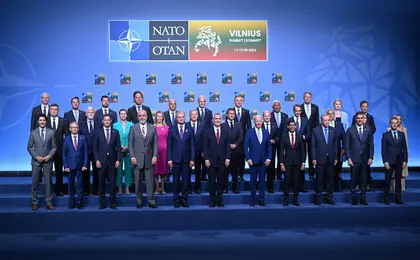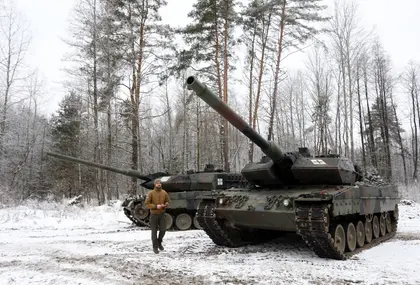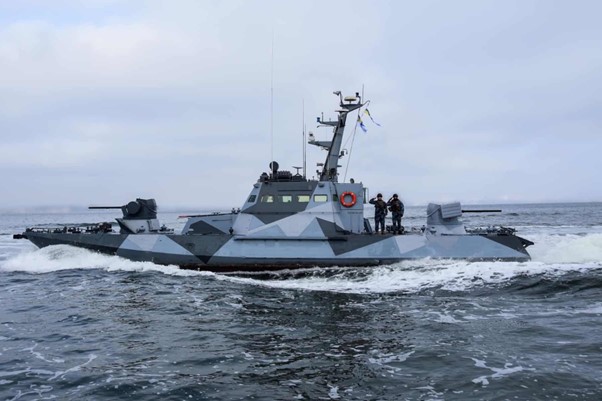NATO leaders met Tuesday in Vilnius vowing to send a positive signal to Ukraine on its quest to join the alliance.
Boosted by an eve of summit breakthrough in Sweden’s bid to join, NATO leaders sought to show a united front, despite rifts over how clear a promise to make to Kyiv.
JOIN US ON TELEGRAM
Follow our coverage of the war on the @Kyivpost_official.
Here are the biggest developments…
Zelensky slams “absurd” decision
On Tuesday morning it was announced NATO will lay out a path of reforms for Ukraine so that it can eventually join the alliance, but is not providing a “timetable,” White House National Security Advisor Jake Sullivan said.
A “reform path for Ukraine” will be drawn up but “I can't put a timetable on it,” Sullivan told reporters at the NATO summit in Vilnius.
President Zelensky reacted angrily to the news, saying in a post on social media: “It’s unprecedented and absurd when time frame is not set neither for the invitation nor for Ukraine’s membership.
“While at the same time vague wording about ‘conditions’ is added even for inviting Ukraine. It seems there is no readiness neither to invite Ukraine to NATO nor to make it a member of the Alliance.
“This means that a window of opportunity is being left to bargain Ukraine’s membership in NATO in negotiations with Russia. And for Russia, this means motivation to continue its terror.

Ukraine’s Navy Shoots Down Russian Missile – A New Air Defense Strategy?
“Uncertainty is weakness. And I will openly discuss this at the summit.”
We value our allies. We value our shared security. And we always appreciate an open conversation.
— Volodymyr Zelenskyy / Володимир Зеленський (@ZelenskyyUa) July 11, 2023
Ukraine will be represented at the NATO summit in Vilnius. Because it is about respect.
But Ukraine also deserves respect. Now, on the way to Vilnius, we received signals that…
Later on Tuesday in a speech at the summit, Zelensky pushed for Ukraine to join NATO, saying "NATO will give Ukraine security, Ukraine will make NATO stronger" as he stood alongside Lithuanian President Gitanas Nauseda, before a Ukrainian army flag from the key battleground of Bakhmut was raised.
He added: "Bakhmut is one of the most decisive battles for freedom in Europe, and that is how our children and grandchildren will remember it.
"Today I set off here with faith... in a NATO that does not hesitate, does not waste time.
"I would like this faith to become confidence – confidence in the solutions that we deserve."
The NATO invitation will come after 'the conditions are met'
NATO leaders agreed at a summit in Vilnius on Tuesday, July 11, that they will invite Ukraine to become a member when certain conditions are reached, alliance head Jens Stoltenberg said.
"We also made clear that we will issue an invitation for Ukraine to join NATO when allies agree and conditions are met," Stoltenberg told journalists after the talks.
The "window of opportunity"
In a discussion at an Expert Forum held during the NATO summit in Vilnius, the Czech president, Petr Pavel, stated that the "window of opportunity" for Ukraine's military advance would likely close before the conclusion of this year.
"We must look realistically: the window of opportunity will more or less close by the end of this year," the Czech leader said.
He added that any progress achieved on the battlefield by the end of 2023 could form the foundation for future negotiations between Kyiv and Moscow, which he believes cannot be avoided.
Among the main reasons for the alleged 'closure of this opportunity' the Czech leader cited not only the challenging winter conditions but also the upcoming elections in Ukraine, Russia, and the United States.
These circumstances, according to President Pavel, are likely to result in a diminishing readiness among Ukraine's allies to provide substantial military support.
Weapons from Germany
Germany, Ukraine’s second biggest supplier of arms to resist the Russian invasion, pledged another 700 million euros ($771 million) in military assistance to Kyiv on Tuesday at a pivotal NATO summit.
Defense Minister Boris Pistorius said at the gathering in Vilnius that the new package “served Ukraine’s priorities: air defense, tanks, artillery”. Germany in May had already announced a new weapons package worth 2.7 billion euros ($3 billion) for Ukraine, ahead of a visit by President Zelensky.
The new aid valued at nearly 700 million euros ($117 million) includes two Patriot missile system launchers, another 40 Marder infantry fighting vehicles and 25 Leopard 1 tanks as well as 20,000 artillery rounds and 5,000 rounds of smoke ammunition.
The defense ministry said in a statement it would also send an “extensive package” for reconnaissance and drone defense, a Luna drone system and two military transport aircraft. The equipment comes from existing supplies of the Bundeswehr armed forces as well as output from partner manufacturers.
Missiles from France
France will provide Ukraine with SCALP long-range cruise missiles to help Kyiv’s forces strike targets deep behind Russian lines, President Emmanuel Macron said Tuesday, and a delivery of the weapons has already been made.
Arriving at a NATO summit focused on Kyiv’s battle against Moscow’s invasion, Macron said Paris would send the SCALP missile, already supplied by London under the name "Storm Shadow.”
Macron said the new missile delivery was designed to allow Ukraine to strike at Russian occupation forces “in depth” during its counteroffensive to liberate its territory.
"The first missiles had been delivered when the president announced it," a source told AFP, speaking at the summit.
The SCALP/Storm Shadow is an Anglo-French weapon with a range of 250 kilometers (155 miles) – the longest of any Western weapon supplied to Ukraine so far – and Britain announced in May that it would supply a batch of the advanced weapons.
Russia reacted with fury, warning that London risked being dragged directly into the conflict, and even some Western allies were concerned that Kyiv might conduct strikes into Russia itself.
F-16 training
An 11-nation coalition will start training Ukrainian pilots on F-16 fighter jets in August in Denmark, officials said.
Kyiv has been calling on its Western backers to send modern fighter jets to help fight Russia's invading forces.
The Netherlands and Denmark are spearheading an initial plan to train the pilots after the US – which has to give clearance for the American-made jets to be used – authorised the move.
Denmark's defence minister Troels Lund Poulsen said training would start in his country in August.
"Hopefully, we will be able to see results in the beginning of next year," he said.
Ukraine's defence minister Oleksiy Reznikov hailed the move and said he hoped to see pilots ready to fly in six months.
His Dutch counterpart Kajsa Ollongren said that the allies would establish a centre to train pilots in Romania over the longer term.
Washington has still not given the go-ahead for any country to supply the jets to Ukraine.
More aid from Norway
Norway's government said Tuesday it was pledging an additional 2.5 billion kroner ($240 million) of military aid to Ukraine, bringing the total to 10 billion for the year.
"The defensive war being waged by Ukraine (...) is being waged now. It is now that is really necessary," Norwegian Prime Minister Jens Gahr Store told reporters on the sidelines of the NATO summit in Vilnius.
The funds will be taken from a 75-billion-kroner purse the Scandinavian country has earmarked for civilian and military aid to Ukraine over the period 2023 to 2027.
In practice, Oslo will this year allocate 10 billion kroner to military aid and 7.5 billion to civilian support, rather than the 7.5 billion initially planned for each. Store did not specify how the funds would be used or what equipment would be purchased.
This post will be updated throughout the day…
You can also highlight the text and press Ctrl + Enter










